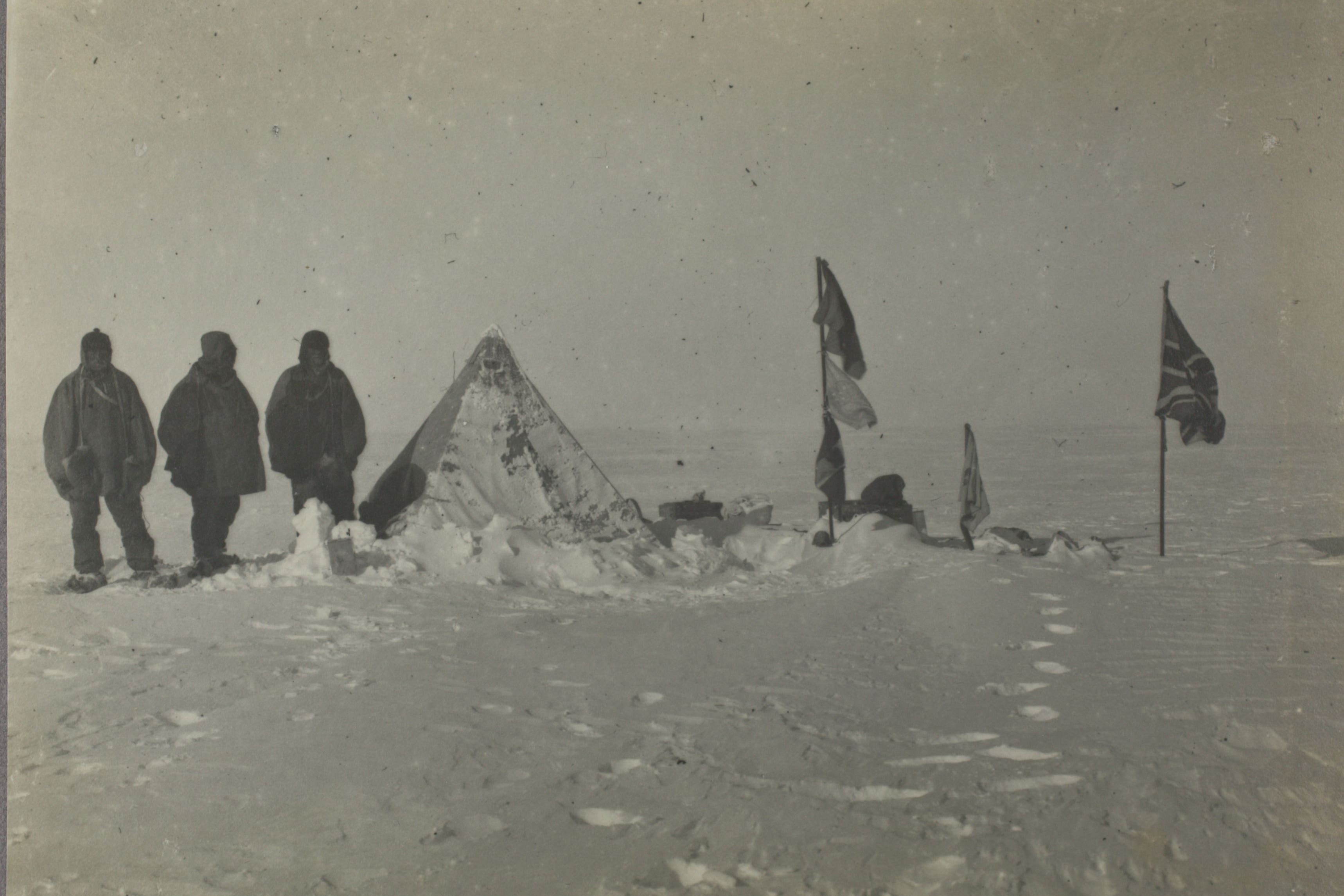Cross in memory of explorer Shackleton goes on display after 8000-mile journey
The cross originally stood in Grytviken, South Georgia, and was built to honour Sir Ernest Shackleton who died there in 1922.

A wooden cross erected in memory of explorer Sir Ernest Shackleton more than a century ago has been unveiled in its new home after a near-8,000 mile journey from Antarctica.
Shackleton died in 1922, aged 47, in Grytviken, South Georgia, during his fourth voyage to the region, and was commemorated by his crew, who built a cross from salvaged timber found at whaling stations – known as the Hope Cross.
The memorial survived for almost a century before it was put into storage and replaced with a concrete monument in 2018.
In 2021, plans were drawn up for the original cross to be brought the approximate 8,000 miles to the Discovery Centre in Dundee, where it has been put on display and will be open to the public to view on Tuesday, after a private rededication ceremony on Monday involving descendants of Polar explorers.
After taking part in Captain Robert Scott’s first Antarctic expedition on the Discovery between 1901 and 1904, Shackleton sacrificed a bid to lead the first team to the South Pole in 1909, putting safety ahead of fame.
Captain Scott successfully reached the South Pole in 1912 but, having discovered the Norwegian Roald Amundsen had beaten him to the target, died with his team on the return leg.
Shackleton planned the British Imperial Trans-Antarctic Expedition to make the first crossing of Antarctica on the Endurance, between 1914-1917, but it failed.
Leading a fresh expedition of exploration, Shackleton reached Grytviken in the Quest but suffered a fatal heart attack on January 5 1922.
It is the decisions we make that show the sort of person we are. He was loved by the sailors. His legacy is leadership. That's why we are here today. I hope people will learn from it
His granddaughter, Alexandra Shackleton, said the explorer was “addicted” to the South Pole, and described it as “the most beautiful place on earth”.
Ms Shackleton never met her grandfather, but hopes the cross – built by the 28-man crew on board the Quest – will remain permanently in Dundee, to educate children and adults about leadership, alongside the Discovery, Captain Scott’s science vessel.
She said her family was “very grateful to all who have made this possible”, including the Dundee Heritage Trust (DHT), South Georgia Heritage Trust (SGHT), the Government of South Georgia and the South Sandwich Islands (GSGSSI), and the British Antarctic Survey (BAS).
Ms Shackleton said: “It is the decisions we make that show the sort of person we are. He was loved by the sailors. His legacy is leadership. That’s why we are here today. I hope people will learn from it.
“The Antarctic is addictive, it is the most beautiful place in the world. There’s no people in the Antarctic – there’s no indigenous population.
“(Shackleton’s men) had to start eating everything as they were starving – seals and birds. A Scottish sailor refused to eat a penguin, because he said, ‘everyone knows they contain the souls of dead sailors’. I think the interest just goes on.
“My grandfather said to his little sister, ‘you can’t imagine what it is like to tread where nobody has trodden before’.
“His nickname was, ‘Old Cautious’ – he would take controlled risks. Our family motto is, ‘By endurance, so we conquer’.”
She described her grandfather’s legacy as “a story of leadership”, and said: “It is all about loyalty.”
She said Shackleton managed to “bridge the education gap”, and after making a decision to abandon a bid to reach the South Pole in 1909, wrote to his wife, Emily, “it is better to be a live donkey than a dead lion”.
Ms Shackleton described it as a “heroic failure”, and added: “In those days it wasn’t a team – the leader led, and if you got a bad leader, it was bad luck.”
David Henry, chair of Dundee Heritage Trust, said: “The cross, when it was put up in 1922, was put up by his shipmates. It stood for decades, withstanding the weather in Antarctica. It was meant to be seen by people – it is there as a commemoration to a great man.
“It was made from a whaling station in South Georgia, by the hands of crewmen on his ship. By putting it on public display, it gives the public a chance to remember a great leader.
“That human endeavour to explore, and also see the next horizon, has not changed after centuries. There’s a fine line between being a hero and being dead.
“People seem to think leadership means being at the front. It means walking alongside the team and having their care as a responsibility and a priority.”
Bookmark popover
Removed from bookmarks